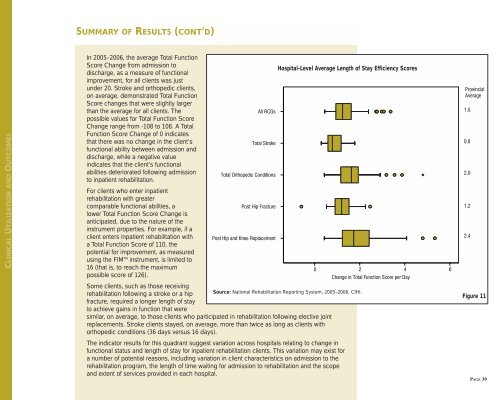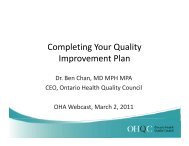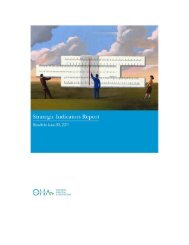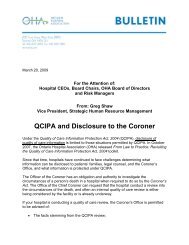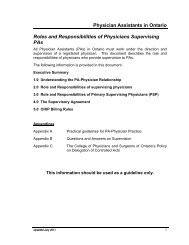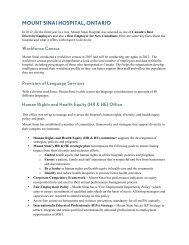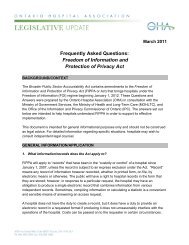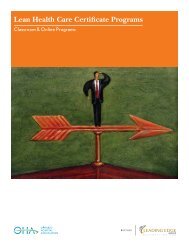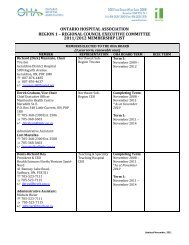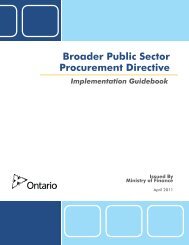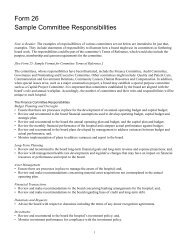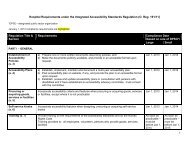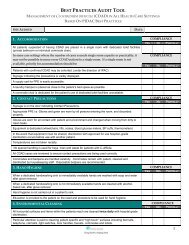R E H A B I L I T A T I O N - Ontario Hospital Association
R E H A B I L I T A T I O N - Ontario Hospital Association
R E H A B I L I T A T I O N - Ontario Hospital Association
Create successful ePaper yourself
Turn your PDF publications into a flip-book with our unique Google optimized e-Paper software.
SUMMARY OF RESULTS (CONT’D)CLINICAL UTILIZATION AND OUTCOMESIn 2005–2006, the average Total FunctionScore Change from admission to<strong>Hospital</strong>-Level Average Length of Stay Efficiency Scoresdischarge, as a measure of functionalimprovement, for all clients was justunder 20. Stroke and orthopedic clients,on average, demonstrated Total FunctionScore changes that were slightly largerthan the average for all clients. TheAll RCGspossible values for Total Function ScoreChange range from -108 to 108. A TotalFunction Score Change of 0 indicatesthat there was no change in the client’sTotal Strokefunctional ability between admission anddischarge, while a negative valueindicates that the client’s functionalabilities deteriorated following admission Total Orthopedic Conditionsto inpatient rehabilitation.For clients who enter inpatientrehabilitation with greatercomparable functional abilities, aPost Hip Fracturelower Total Function Score Change isanticipated, due to the nature of theinstrument properties. For example, if aclient enters inpatient rehabilitation with Post Hip and Knee Replacementa Total Function Score of 110, thepotential for improvement, as measuredusing the FIM TM instrument, is limited to16 (that is, to reach the maximum024possible score of 126).Change in Total Function Score per DaySome clients, such as those receivingrehabilitation following a stroke or a hip Source: National Rehabilitation Reporting System, 2005–2006, CIHI.fracture, required a longer length of stayto achieve gains in function that weresimilar, on average, to those clients who participated in rehabilitation following elective jointreplacements. Stroke clients stayed, on average, more than twice as long as clients withorthopedic conditions (36 days versus 16 days).The indicator results for this quadrant suggest variation across hospitals relating to change infunctional status and length of stay for inpatient rehabilitation clients. This variation may exist fora number of potential reasons, including variation in client characteristics on admission to therehabilitation program, the length of time waiting for admission to rehabilitation and the scopeand extent of services provided in each hospital.6ProvincialAverage1.50.82.01.22.4Figure 11PAGE 30


